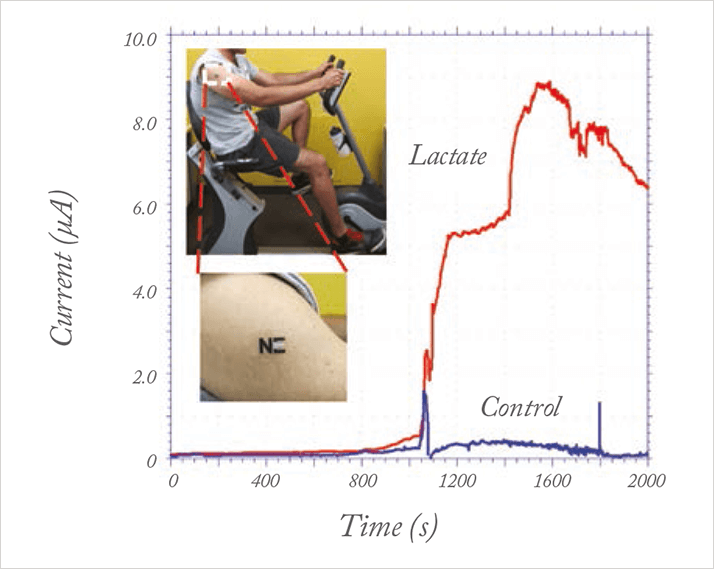The lactate threshold (the work rate beyond which blood lactate concentration increases exponentially) is a better predictor of performance than maximal aerobic capacity and a better indicator of exercise intensity than heart rate (1) so its measurement is of significant clinical importance in monitoring extreme athletes – or military personnel being put through their paces. But measuring lactate levels usually requires a small blood sample – more than a mild inconvenience mid-marathon. Now, a research team led by Joseph Wang at the Department of Nanoengineering, University of California San Diego, have developed a biosensor that can be applied to the skin much like a temporary tattoo to measure lactate levels in sweat (2). “We couple our printable flexible electrochemical sensors with artistic tattoo-transfer technology, and use it for continuous monitoring for fitness, healthcare and military applications,” says Wang, who also features on The Power List The sensor comprises of three screen-printed electrodes, one of which is coated with lactate oxidase to provide chemical selectivity. The conversion of lactate into pyruvate releases two electrons – a wired device monitors the resulting current. The metabolite biosensing tattoo readily flexes with movement and was able to accurately measure lactate levels in ten exercising volunteers. “Such electrochemical devices are low cost, low power, and portable – and hence highly attractive for such on-body operations,” Wang concludes. To prove the point, start-up company Electrozyme (www.electrozyme.com) is currently seeking funding to further develop and commercialize the technology.


- J. Wenzhao Jia et al., “Electrochemical Tattoo Biosensors for Real-Time Noninvasive Lactate Monitoring in Human Perspiration”, Anal. Chem., 85, 14, (2013).
- M. L. Goodwin, “Blood Lactate Measurements and Analysis during Exercise: A Guide for Clinicians”, J. Diabetes Sci. Technol., 1 (4), 558–569 (2007).
References
- J. Wenzhao Jia et al., “Electrochemical Tattoo Biosensors for Real-Time Noninvasive Lactate Monitoring in Human Perspiration”, Anal. Chem., 85, 14, (2013).
- M. L. Goodwin, “Blood Lactate Measurements and Analysis during Exercise: A Guide for Clinicians”, J. Diabetes Sci. Technol., 1 (4), 558–569 (2007).




